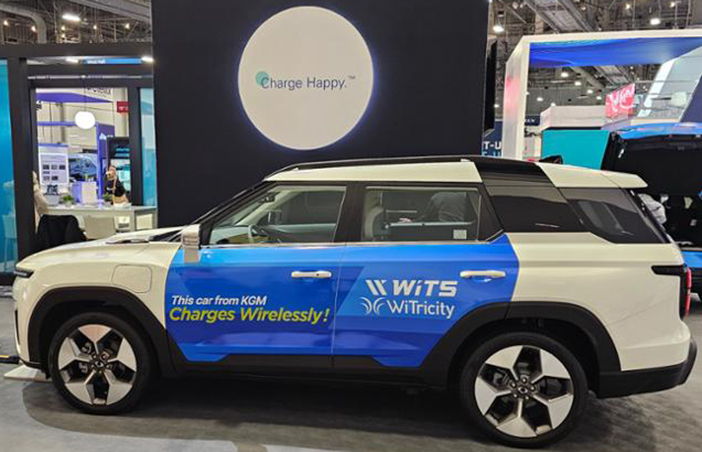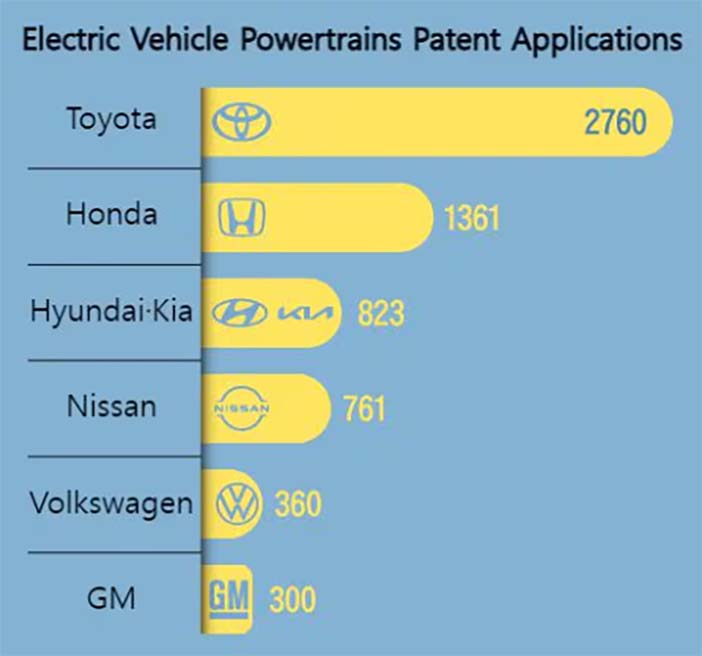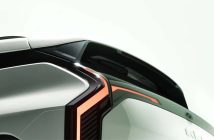+++ There’s some intrigue in Ingolstadt as reliable sources are saying the AUDI Q9 prototypes that have been spied undergoing testing are actually the next-generation Q7. If that’s correct, it would make a lot of sense as the prototypes appear to be roughly the same size as the current model. While Audi is staying tight-lipped, a prototype was recently spied undergoing cold weather testing. It’s heavily disguised, but features far more changes than the minor facelift that was introduced a few weeks ago. The SUV adopts a shorter and wider grille with a distinctive pattern. The prototype has also been equipped with split lighting units and a larger lower intake, which sports a honeycomb mesh insert. Camouflage does a pretty good job of hiding styling details, but the model has flowing bodywork and flush-mounted door handles. They’re joined by a more curvaceous shoulder line and reimagined third-quarter glass that appears to take a cue from the Q6 e-Tron. The rear end is evolutionary, but it sports a modernized bumper as well as a more traditional liftgate. There will also be a dual exhaust system as well as temporary taillights that droop down at the outside edges. The cabin is expected to draw inspiration from the soon-to-be revealed Q6 e-Tron. While that remains to be seen, the SUV could be outfitted with an 11.9 inch digital instrument cluster and a 14.5 inch infotainment system. They could potentially be joined by a 10.9 inch front passenger display. The engine lineup is hazy at this point, but we can likely expect petrol, diesel and plug-in hybrid options as well as an SQ7 variant. We’ll learn more closer to launch, but the next generation could be introduced next year. +++
+++ HYUNDAI and Kia said Wednesday they showcased the latest technologies involving their electric vehicles (EV) at the annual EV Trend Korea exhibition held in Seoul. The annual trade show, now in its seventh year, is hosted by the Ministry of Environment to promote technologies and the adoption of EVs. This year’s three-day event kicked off at the COEX convention center in southern Seoul. Hyundai Motor has set up special booths, named EV Benefit Zone and EV Experience Zone, where visitors can observe and experience the benefits of EVs compared with internal combustion engine models. Visitors can experience Hyundai’s V2L technology, through which household appliances can be powered through electricity from the company’s EV models. Also, the company has showcased its revamped Ioniq 5 and Kona EV models at the venue. Kia has presented 3 spaces themed on EV charging, space & technology and sustainability, the company said. Visitors can experience various services and functionalities offered to Kia model drivers, such as over-the-air software updates and the company’s projects related to environmental sustainability. +++
+++ KGM (KG Mobility), formerly known as SsangYong, said its February sales fell 9.1 percent from a year earlier due to weakened demand. KG Mobility sold 9.452 vehicles last month, compared with 10.401 units sold a year earlier, the company said in a statement. Domestic sales fell 44.8 percent on-year to 3.748 units amid sluggish demand and reduced working days due to the Lunar New Year holiday, the company said. The company’s exports, however, jumped 56.4 percent to 5.704 units thanks to increased shipments to Hungary, Britain, Spain and Turkey. KGM boss Chung Yong-won said the company expects to boost sales by expanding global launches of key models, such as the Torres EVX (photo), and also strengthening domestic market operations. +++

+++ The KIA EV9 is just hitting American dealers’ lots, but the automaker is already looking at ways to make it more appealing to buyers. Early EV9 buyers saw $3.750 in customer cash, but Kia increased that amount to $5,000 on March 1. On top of that, Kia is offering a $1.000 loyalty discount for the EV9, which, for some shoppers, could push the discounts even further. The automaker also cut financing rates for the EV to 2.49% and cut monthly lease prices. Kia has asked dealers not to add markups to the EV9’s already-steep-for-a-Kia price tag, but some have. In the United States, the EV9 has outsold the EV6 so far this year. Despite that popularity, the discounts will help the larger EV remain competitive. Kia opened the order books late last year and had plenty of reservations early on. It sold 1.113 units in December and 1.408 in January, which bodes well for the upcoming Hyundai 3-row electric MPV. Now expected to be called the Ioniq 9, the new model will share the E-GMP platform with the EV9, but we won’t get an official look at the SUV until June when the automaker is expected to hold a reveal event at the Busan International Motor Show in South Korea. +++
+++ As the automotive industry transitions towards future vehicles, it has once again become a battleground for PATENT APPLICATIONS . In the past, the main focus of patents was on the engine, the heart of the car. However, with the emergence of electric vehicles (EVs), there has been an expansion in patent applications for areas that were not previously emphasized. In particular, the industry competes fiercely in 3 significant areas, known as the “Big Three”: the drivetrain, which directly affects EV performance; thermal management, which affects battery life and thus influences driving range; and autonomous driving technology. In a review of patent applications filed with the Korean Intellectual Property Office and the IP5 regions (South Korea, the United States, Europe, Japan and China), which represent over 80% of global patents, Toyota led with approximately 14.000 filings in the Big Three areas. Hyundai and Kia were next, with around 8.000 patents, followed by Nissan (5.300 patents), Honda (4.800 patents) and Ford (4.000 patents). European manufacturers such as Volkswagen and Mercedes, traditionally focused on internal combustion engines, ranked relatively low. The analysis used data from 2001 to 2021, considering the 18-month confidentiality period after patent application as per patent law. The strongest players in the EV drivetrain sector, ironically, turned out to be Japanese companies, referred to as “latecomers” to the EV market. Although they have lagged in commercialization, they have not neglected acquiring foundational technologies. Toyota topped the list with 2.760 patents, followed by Honda (1.361 patents) ranking second and Nissan (761 patents) fourth. Hyundai and Kia were third with 823 patents. Toyota has recently filed a patent that equips EVs with manual transmissions, increasing patents that mitigate the bouncy ride of EVs or allow them to drive more like internal combustion engine vehicles. Last year, it established its BEV Factory to secure EV technologies. Hyundai is also aggressively responding by significantly increasing traditional patents for performance improvement. The company recently patented the “Active Air Skirt” installed between the car’s front bumper and the front wheels to reduce air resistance and increase EV range. In contrast, companies like Honda and Ford focus on practicality in their patents. Honda patented a drawer in the bumper of an EV, leveraging the fact that EVs do not require a fuel tank or exhaust system in the lower rear section. Ford devised a method to carry batteries on the vehicle roof. In the hybrid vehicle sector, Toyota (9.629 patents), Hyundai and Kia (5.951), Nissan (4.050) and Ford (2.728) were at the top. Notably, German manufacturers, traditionally hesitant about hybrid vehicles, are increasing their patent applications. Volkswagen has filed 306 patents since 2016, with Stellantis and Renault ramping up their applications. “The movement of European automakers suggests that Europe’s goal of transitioning to EVs by 2035 might be delayed, and the popularity of hybrids could continue beyond 2035”, said Choi Eun-seok, a senior examiner at the Korean Intellectual Property Office’s automotive division. In the autonomous driving sector, IT companies, especially from China, stand out. Baidu has registered the most patents (1.193), with 14 Chinese companies making it into the top 50. Hyundai ranked eighth with 567 patents. +++

+++ RIVIAN is halting plans to build a new multibillion-dollar factory in Georgia, an abrupt reversal aimed at cutting costs while the company prepares to launch a cheaper electric vehicle. The retreat comes 2 weeks after Rivian announced job cuts and said it would keep production flat this year, falling well short of expectations and triggering a heavy selloff in the shares. The company has struggled to transition to mass production since going public in 2021, and the high prices of its models have been a hard sell as overall demand for EVs fades. +++
+++ TESLA stock is in a tailspin because Elon Musk has too many unfinished projects on deck at the car company, according to investor Ross Gerber. The longtime Tesla bull pointed to various headwinds Musk’s company has battled over the last year, including rising competition. Tesla is still trying to edge out competitors like BYD in China, which prompted the company to issue hefty price cuts on some of its models last year. Tesla sold 60.365 vehicles in China last month, its lowest month of sales in the country since December 2022, according to data from the China Passenger Car Association. Overseas competition remains a core issue for the carmaker, Gerber warned, as it’s taking attention away from Tesla’s other projects. “Investors are revaluing Tesla more as a hardware company than a software company because they are having to resort to all the levers that car companies do to increase demand”, Gerber said in an interview. Tesla has loads of unfinished projects on deck. It still hasn’t completed its full self-driving technology, which is critical to adding value to the company, Gerber said. Musk has also threatened to move AI projects away from Tesla unless he gains 25% ownership of the company, a request Gerber previously called “delusional”. “Those are the brand levers that gave Tesla its premium. And between Elon’s behavior and the lack of completion to a lot of these projects, Tesla is just coming down to earth to a much more reasonable valuation, to where it kinda should be”. Gerber, who previously ran for a seat on Tesla’s board, has been critical of Musk and warned of headwinds facing Tesla over the last year. Musk has effectively “stepped aside” as Tesla CEO amid his erratic behavior on X, and is “blackmailing” investors for more control of the company, Gerber said earlier this year. Risks stemming from Musk’s leadership haven’t been lost on other Tesla investors. A group of 17 shareholders wrote a letter to Tesla’s board in 2023, asking Musk to be reined in amid his chaotic takeover of Twitter. Shares are down 24% from the start of the year, leading some investors to note that the company can no longer be lumped in with the Magnificent Seven mega-cap tech stocks whose superior performance has carried the stock market for much of the last year. +++
+++ TOYOTA is increasing its bet on flex fuel-hybrid vehicles with an investment of 11 billion reais ($2.2 billion) in its Brazilian operations between 2023 and 2030. The Japanese automaker will use the money to expand production capacity in Latin America’s largest economy for models that use hybrid-flex fuel technology. Of the total amount, 5 billion reais is confirmed until 2026 and includes the production of a previously announced new compact hybrid-flex vehicle, with production expected to begin in 2025, as well as another model using the same technology that will be developed specifically for Brazil, according to a statement issued Tuesday. The plan will also see batteries assembled at a Toyota factory in Sorocaba, northwest of Sao Paulo, beginning in 2026, to equip hybrid vehicles already produced locally. “We have been carrying out a series of structural reforms for a long time to improve the company’s competitiveness”, Toyota do Brasil president Evandro Maggio said in an interview. “It is necessary to launch new products, adapting to customer needs, to customer demand, demand compliance and market configuration”. As part of the plan, Toyota will expand its manufacturing facility in Sorocaba, which is currently operating at full capacity. New facilities will be built on the site, to which production operations from Indaiatuba (also in Sao Paulo state) will be transferred. The change “will occur gradually, starting in mid-2025, with completion scheduled for the end of 2026”, according to the statement. Toyota’s competitors have also been pumping money into Brazil this year. General Motors announced plans to invest 7 billion reais in January, with Volkswagen setting aside 9 billion reais the following month along with 5.5 billion reais from Hyundai. All of them are seeking to begin the electrification of their product lines in the Brazilian market, investing in flex-hybrid versions, which combine electric and combustion engines that can be fueled with gasoline or ethanol. Toyota is a pioneer in the segment, having sold models with this option in Brazil since 2020. New investments by the automotive industry in Latin America’s largest economy come after Brazilian president Luiz Inacio Lula da Silva’s government published an incentive program for new technologies in December. Dubbed “Mover”, the green mobility plan includes fleet sustainability requirements and tax breaks for companies that invest in decarbonization. It aims to promote expanded investments in energy efficiency, including minimum recycling requirements for vehicle manufacturing and lower taxes for those that pollute less. Maggio said one of the arguments in favor of investing in Brazil is the country’s expansion of exports, with shipments abroad accounting for 40% of the Brazilian unit’s demand. “As you build your trading power, your regional coverage, investments will happen naturally”, he said. Multinationals have sped up decarbonization plans in Brazil after Chinese competitors, such as Great Wall Motor and BYD, announced plans to produce electrified models in the country. Toyota’s last investment in Brazil was announced in April last year, when it set aside 1.7 billion reais to produce a new compact flex-hybrid vehicle in Sorocaba and update another model. The resources announced in 2023 are included in the latest 11 billion reais announcement, Maggio said. +++


